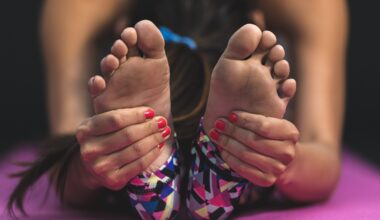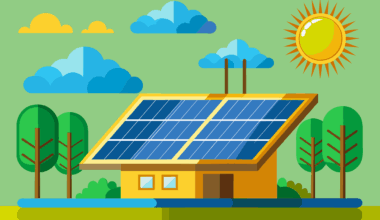How Athlete Sleep Patterns Differ From Non-Athletes
Sleep plays a vital role in overall health, particularly for athletes. Research indicates that athletes tend to require more sleep compared to non-athletes. This additional sleep helps with recovery and maintaining performance levels. Athletes often engage in intense physical activity, leading to increased fatigue and thus a greater need for restorative sleep. Understanding how sleep patterns vary can inform training regimes and recovery strategies. Athletes often experience deeper sleep cycles, which support physical rejuvenation and neurocognitive functions. Moreover, sleep deprivation can significantly hinder athletic performance and mental sharpness. This article will delve into distinct patterns of athlete sleep, examining key factors that differentiate them from non-athletes. Interestingly, some studies suggest that elite athletes might average over eight hours of sleep per night. In contrast, non-athletes often get by on less, typically around six to seven hours. This disparity can affect overall wellness and performance in both physical and mental domains. Prioritizing sleep can optimize recovery; thus, athletes must cultivate healthy sleep habits for long-term success.
Physiological Differences in Sleep Needs
Athletes and non-athletes have varying physiological requirements, particularly when it comes to sleep. Beyond just duration, the quality of sleep also differs significantly. Athletes typically experience more time in slow-wave sleep, which is crucial for physical recovery. This sleep stage aids muscle repair, immune function, and energy restoration, factors important in athletic training. Compared to them, non-athletes often have fragmented sleep, which can impact their recovery processes. Inflammation and muscle soreness in athletes necessitate restorative sleep to promote healing. Additionally, the hormonal responses can differ, with athletes producing higher levels of growth hormone during sleep than non-athletes. This growth hormone is essential for muscle recovery and development, underpinning the importance of adequate sleep. Furthermore, circadian rhythms can also play a significant part in the sleep experiences of both groups. Athletes often adjust their sleep patterns due to training schedules or competition, leading to varied sleep-wake cycles. These differences indicate a need for tailored sleep strategies that accommodate the strenuous demands placed on athletes. Acknowledging these differences can aid non-athletes in understanding their sleep requirements, promoting better health and wellness.
Specific environmental factors further distinguish athletes’ sleep quality from that of non-athletes. Athletes generally have higher body temperatures due to their training intensity, which can disrupt sleep if not managed properly. They often utilize specific sleep environments and rituals to enhance sleep quality. Noise, light, and temperature control are critical components in creating a conducive sleep environment. Many athletes invest in soundproofing their rooms or using blackout curtains to minimize disturbances. These attributes are often overlooked by non-athletes, who may not prioritize sleep efficiency as much. Moreover, athletes frequently incorporate naps into their routines as recovery methods, in addition to regular nightly sleep. Napping allows for additional recovery and performance benefits, which non-athletes might underestimate. However, it’s essential to craft naps thoughtfully to not disrupt the primary sleep cycle. Nutrition and hydration also play pivotal roles in sleep quality, and athletes tend to employ more strategic dietary practices compared to their non-athlete counterparts. By focusing on these factors, athletes can better optimize their sleep patterns for peak performance while heading towards more excellent recovery and overall functional health.
The Impact of Training on Sleep Quality
Regular physical training significantly influences sleep quality for athletes. Engaging in regular exercise can improve sleep onset, duration, and overall quality. In contrast, non-athletes, who may not engage consistently in physical activity, often report higher instances of insomnia or restlessness. Interestingly, research suggests that moderate to intense exercise is linked to deeper, more restorative sleep. However, excessive training without proper rest can lead to overtraining syndrome, resulting in detrimental sleep patterns. Athletes must find a balance between workout intensity and recovery to maintain optimal sleep. Conversely, non-athletes might struggle to experience the tranquility associated with regular exercise, contributing to fragmented sleep. Moreover, warm-up routines and cooldown periods aid athletic recovery; practicing such rituals can enhance sleep by signaling the body to relax. Sleep hygiene, including technology use before bed, emerges as a crucial factor for both groups. Athletes often adopt stricter technology limits pre-sleep to minimize disruptions. Incorporating these practices promotes healthier sleep patterns that can yield performance benefits. Athletes have a clear advantage in this area and can further educate others on the importance of merging physical activity with proper sleep strategies.
Stress levels are another factor affecting sleep quality distinctly between athletes and non-athletes. Athletes often manage stress through active engagement in their sport, which can reduce anxiety and promote relaxation before sleep. In contrast, non-athletes might experience increased anxiety, stemming from work or personal life concerns. High stress can lead to difficulty falling asleep, compromising overall sleep quality. Athletes commonly implement mental strategies such as visualization and relaxation techniques before bedtime to enhance sleep. These techniques assist in transitioning the mind to a calmer state, favoring deep sleep onset. Furthermore, research indicates physiologically lower cortisol levels in good sleepers, helping explain why athletes, with their well-managed recovery strategies, may experience lower nighttime stress levels. Non-athletes would benefit greatly from adopting some of these methods that athletes frequently use. Additionally, burnout and fatigue, common culprits of sleeplessness in both groups, need attention. Prioritizing mental recovery alongside physical recovery should be critical. Blending these approaches can lead to superior sleep outcomes, ensuring adequate rest for optimal daily function, whether in sports or everyday activities.
Sleep Disorders in Athletes
With the increased demands on athletes, sleep disorders can manifest more readily compared to non-athletes. Conditions such as sleep apnea, insomnia, and restless leg syndrome may arise due to physical and psychological stressors associated with intense training. Many athletes might inadvertently ignore or misinterpret these symptoms, believing they can push through without addressing underlying issues. Heightened training loads can cause sleep disturbances that undermine recovery. Understanding these disorders, along with timely intervention, is paramount to performance maintenance. Non-athletes, generally facing a different level of stress and physical demands, may experience sleep problems differ from that of athletes. Sleep-related issues often arise from lifestyle choices rather than the acute physical stressors athletes endure. Although both groups can experience sleep issues, unmanaged ailments might be more pronounced in athletes. Awareness and education are vital to dealing with these conditions effectively. Increasing access to sleep specialists within athletic communities can aid in diagnosis and treatment. Furthermore, athletes should advocate for research into training adaptations to lessen sleep-disruptive symptoms. Recognizing sleep disorders can greatly enhance performance and improve quality of life, contributing to well-rounded health in both demographics.
In summary, distinguishing the sleep patterns of athletes from those of non-athletes highlights essential aspects of recovery and performance. Athletes need more focused strategies surrounding sleep hygiene and recovery than their non-athletic counterparts. Understanding the physiological differences, training impacts, environmental factors, and the role of stress reveals how distinct these two groups are in their sleep needs. By examining these elements, it is clear that athletes maintain rigorous sleep routines to promote peak performance. Non-athletes can adopt practices from athletes, prioritizing sleep, and recognizing its vital role in overall health and well-being. As awareness increases around the significance of sleep within athletic contexts, this knowledge can transition into broader settings. Solutions for managing sleep disturbances must effectively relate to both audiences. Adapted protocols for enhancing sleep quality can enhance sports performance. Ultimately, fostering healthy sleep patterns benefits both athletes and non-athletes. With shared strategies, both groups can maximize daily performance and recovery while prioritizing health. Comprehensive education on the impact of sleep can unify efforts towards achieving optimal sleep and wellness for everyone.
Further exploration into the impact of sleep on recovery and performance reveals essential relationships that merit attention. Effective strategic integration of sleep and training regimens can lead to minimized downtime and improved outcomes for athletes. Athletes must continue to innovate around their sleep practices, utilizing both scientific insights and communal knowledge to promote their recovery. Additionally, non-athletes can leverage these findings to maximize their productivity and cognitive performance throughout the day. The mutual benefits of prioritizing sleep can foster better health in general. Ultimately, blending these approaches can create a vast improvement in sleep patterns for all individuals. Enhanced recovery leads to optimized functions in various domains. Harmony between physical, mental, and emotional wellness is achievable by recognizing the power of sleep. Research will continue to unveil more about the interconnection between sleep and athletic performance. Eventually, new tactics may emerge for both athletes and non-athletes, leading to better quality of life. Collaboration among health professionals, researchers, and athletes will drive innovations in sleep science. In conclusion, understanding these nuances promotes broader dialogues about sleep practices across various sports and lifestyle settings for improved health.


